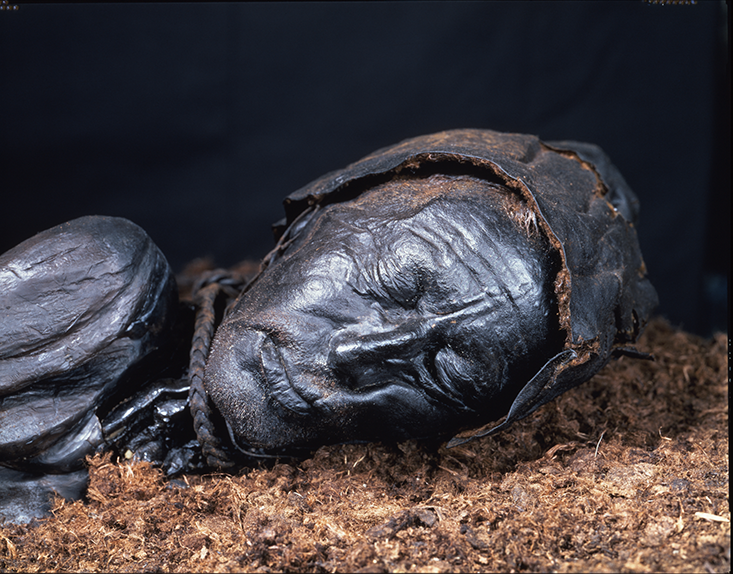Environmental Peat Bogs
"They [peat bogs] take thousands of years to develop. And in five minutes, a wildfire can blow through that area and release 400 to 600 years of peat accumulation and change it forever."
Merritt Turetsky, peat researcher, University of Guelph
"It's carbon that has accumulated over several thousands of years."
"If it were to be released, the global C02 concentration would be much higher."
"If you have a large amount of this moss [sphagnum] in a peatland, you aren't going to get a very severe fire. The key is to keep peat wet and get that moss growing on the surface again."
"Our research shows very conclusively that if you can re-wet the system and get the key peat mosses growing on the surface, you can essentially put a cap on the system and limit burning, or resist fire completely."
Mike Waddington, professor of ecohydrology, School of Geology and Earth Sciences, McMaster University

The spongy moss layered and accumulated over hundreds of years comprising peat beds are tremendous carbon sinks and as such they are environmentally invaluable. Forests are known for their capacity to absorb and store carbon. And peat bogs do the very same thing. If and when a forest burns, carbon is released into the atmosphere. When forests are logged out as they have been in South America the vast resource they represent as carbon sinks are lost.
Earth possesses an estimated 4.1-million square kilometres of peatlands; 3 percent of the globe's land surface is comprised of peat bogs. They're to be found for the most part in the northern latitudes of the world; in Canada, Alaska, Europe and Russia. Sphagnum and other types of mosses which have accumulated for hundreds of years make up peat bogs; a gradual but important process. Peat has its uses, as a soil corrective in gardening, even as a fuel to be burned for energy and warmth.
 |
| Mer Bleue peat bog, Ottawa Valley, Ontario |
 |
| Unmarked by time: On display at the Silkeborg Museum, in Denmark, Tollund Man’s visage seems eerily peaceful—if you ignore the noose around his neck. Arne Mikkelsen |
The warming trends we're becoming more familiar with over time, have the capacity to dry out bogs, and when they're dry, they become susceptible to fires which can burn deeper and more intensely than other types of fire, since a peat fire is capable of smouldering for months and in the process, can release massive amounts of carbon. Like the peat moss that accumulates gradually over time, so too does the carbon it so tenaciously holds in place.
In Indonesia, bogs were drained to make the land available for agricultural purposes, resulting in their becoming drier through the evaporation caused by El Nino-related warmth, and they burned for months, the haze that resulted causing widespread health complications. The burning bogs released a greater amount of carbon daily during the months of September and October 2015 than the European Union in its entirety emitted for that period.
The Fort McMurray wildfire that posed as such an immense threat and which burned uncontrollably this past spring consuming a good portion of the town's infrastructure and homes, as well as the nearby forest, also burned local bogs. By June the wildfire had been controlled to the extent that trees were no longer ablaze outside Fort McMurray, but crews were put to work turning over peat with backhoes attempting to extinguish the smouldering hot spots.

Shane O'Brien/Postmedia News files A neighbourhood burns in Slave Lake on May 15, 2011 after a wildfire swept through the town.
But atmospheric warming tends to alter the environment, and peat that becomes dry sees greater amounts of oxygen aerating tree roots and other vegetation, causing them to grow larger, which in turn uses greater amounts of water, additionally drying out the peat in which they grow. In the Slave Lake fire, a huge amount of peat was burned in some bog areas. Five years on, the bog has not yet begun to recover.
"It is definitely on the brink. There's little to no sphagnum recovery, which is very worrying, because if it's going to return to a carbon-accumulating system, which is what you would hope, really, it needs to get that sphagnum back. All that peat, combusted and gone", sighed Sophie Wilkinson, a doctoral student in ecology at McMaster University.
Canada The total area of peatland, reported by the Canadian WEC Member Committee to be more than 1.1 million km2, is greater than that of any other country. Deposits of peat are widely distributed, with the largest areas in the Northwest Territories (23% of the Canadian total), Ontario (20%) and Manitoba (19%). The reported amounts of peat in place are enormous, with over a billion tonnes classified as proved and an additional 300+ billion tonnes as indicated or inferred.There have been a number of assessments of the potential for using peat as a fuel (including for power generation) but at present there is virtually no use of peat for energy purposes and none is likely in the immediate future. Canada is, however, a major producer (and exporter) of peat for horticultural applications.

The dramatic evacuation of Fort McMurray - peat part-fuelled the inferno (Pic: Chris Schwarz/Government of Alberta)
Labels: Bioscience, Energy, Environment, Global Warming, Nature

0 Comments:
Post a Comment
<< Home